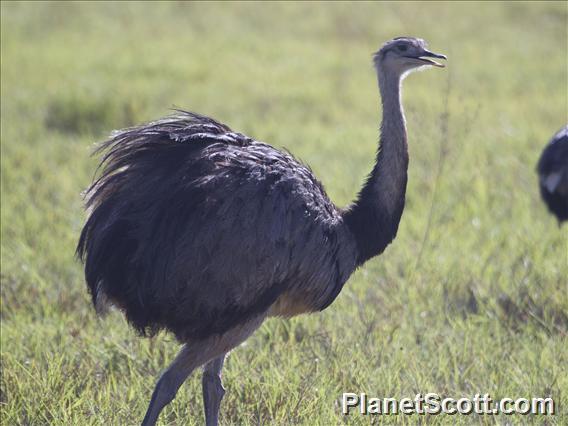Greater Rhea (Rhea americana)

Greater Rhea (Rhea americana)
×


Greater Rhea (Rhea americana)
About Greater Rhea (Rhea americana)
- Kingdom: Animals
- Phylum: Chordates
- Class: Birds
- Order: Struthioniformes
- Family: Rheas
The greater rhea is a species of flightless bird native to eastern South America. Other names for the greater rhea include the grey, common, or American rhea; ema (Portuguese); or ñandú. One of two species in the genus Rhea, in the family Rheidae, it inhabits a variety of open areas, such as grasslands, savanna or grassy wetlands. Weighing 20–27 kilograms (44–60 lb), the greater rhea is the largest native bird in the Americas. In the wild, the greater rhea has a life expectancy of 10.5 years. It is also notable for its reproductive habits, and for the fact that a population has established itself in Northern Germany in recent years. The species is listed as Near Threatened by the IUCN.
Source: Wikipedia
Lifelists
Trips
Visits
-
2011-07-14
Chapada dos Guimaraes, Brazil -
2011-07-15
Pantanal, Brazil


